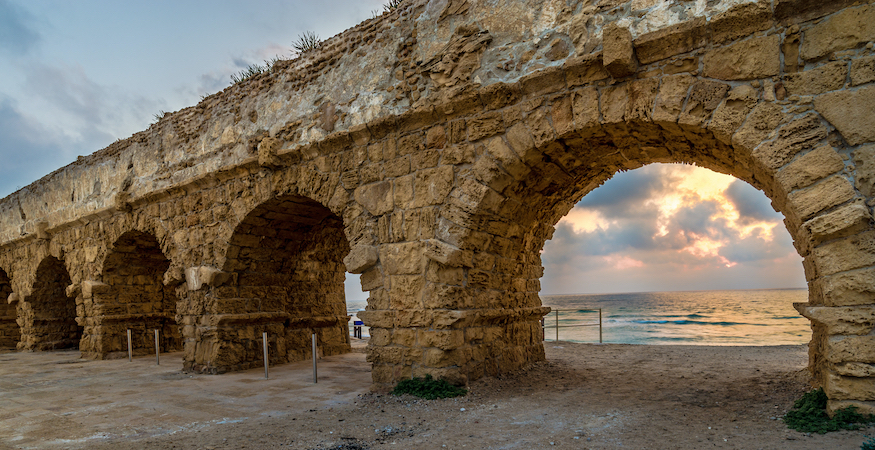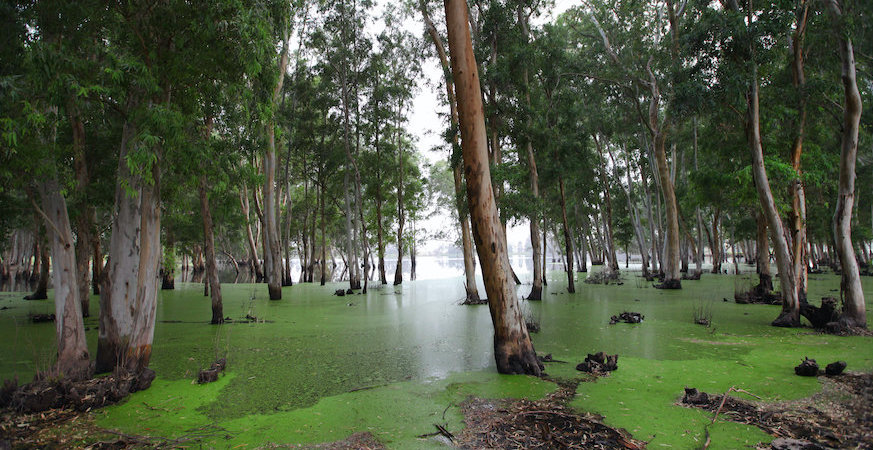The Plain of Sharon
We continue our ‘Walk through the Land’ series (Genesis 13:17) with our fourth article. Our goal is to help you understand the Bible better by knowing about the land where the Bible was written and where most of the events recorded in the Bible took place. Just as learning Hebrew and Greek can give more in-depth Scriptural insight, historical geography of the holy land does the same. It will also enhance your next visit to Israel.
In our previous article, we focused on specific areas of the coastal plain, known in Hebrew as Mishor HaHof. The plain is divided into three distinctive parts: Philistia (south), Sharon (centre), and Acre (north). In this article, we examine the Plain of Sharon, known as Ha-Sharon, ‘the Sharon.’
I am the rose of Sharon and the lily of the valleys (Song of Solomon 2:1).
Sharon is a Biblical region, though it is only mentioned seven times in Scripture: I Chronicles 5:16; 27:29; Song 2:1; Isaiah 33:9; 35:2; 65:10; Acts 9:35. Rabbinic literature refers to it more frequently.
First, Sharon, the central region of the coastal plain, begins at the Yarkon River in the Tel Aviv-Jaffa area in the South to Mount Carmel in the North. Its dimensions are 90 kilometres (56 miles) by 15 kilometres (9.3 miles). Sharon is framed by Tel Aviv (south), the Samarian hills (east), Carmel (north), and the Mediterranean (west).
“For the ancient world, Sharon’s value came from being a key section of the Via Maris”
For the ancient world, Sharon’s value came from being a key section of the Via Maris (called in Isaiah 9:1 the ‘way of the sea’) or the international highway that linked Egypt/Africa with Mesopotamia and Eurasia. The same highway that brought trading caravans also made way for conquering armies. As such, the Via Maris was mentioned in Egyptian inscriptions by King Thutmose III (15th century BC). Joshua conquered Sharon’s kings (Joshua 12:8). Napoleon (1799) and General Edmund Allenby (1917-18) also invaded Palestine via Sharon.
When we hear the word ‘Sharon,’ it conjures up images of romance, roses, parks and gardens. The Old Testament reality was very different. It was sparsely inhabited and much neglected. Sharon is flat alluvial plain that is trisected by three parallel North-South kurkar ridges. They prevented river water from flowing to the sea which, when backed up, could cause swamps, especially during the rainy season.
During the Roman period, outlets were cut through the ridges to give water passage to the Mediterranean. Thick ‘haunted’ oak forests called ya’ar, and the swamps inhibited agriculture. The Sharon plain was suitable for grazing sheep and cattle (I Chronicles 5:16; 27:29). Small ports along the Sharon included Dor, Apollonia, and Strato’s Tower. The plain lacked proper freshwater, deep ports, and good roads.
“How did all these changes come about? Herod the Great was the key”
Herod the Great & Caesarea
By the New Testament era, Sharon had a massive transformation: it became a capital territory. Today, it is the most densely populated region in Israel. How did all these changes come about?
Herod the Great was the key. He dredged the port at Strato’s Tower, built proper roads, and piped water through Roman Aqueducts from Mount Carmel 20 kilometres away (remnants of this aqueduct are still with us to this day). In addition, he built a magnificent city that resembled a miniature Rome itself, with a palace, theatre, hippodrome, temple, and deep water port. He named this metropolis after his patron: Caesarea-Maritima.

The ancient aqueduct at Ceasarea built by Herod the Great along the Mediterranean shore. | Photo: Shutterstock
In one stroke, this once lonely and neglected region was transformed into a capital territory, which it remained from 6 to 639 AD. The Roman procurators, like Pilate, Felix, and Festus, had their headquarters in Caesarea. The Book of Acts mentions it 15 times: as the residence of Philip the evangelist, who had four prophetic virgin daughters (Acts 21:8-9); Cornelius the centurion also lived here and became the first official Gentile convert to the Christian faith, thanks to the preaching of Peter (Acts 10). In addition, Gentile Pentecost first happened in heathen Caesarea (Acts 10:44-46). King Herod Agrippa I, a fierce enemy of the early church, gave an oration here and was struck down by God (Acts 12:21-23). Paul spent over two years in prison (24:27) and testified to Herod Agrippa II, whom he almost persuaded to become a Christian (Acts 26:28). From here, Paul sailed to Rome and into history (Acts 27).
Eusebius (260-340 AD) the church historian became a bishop here, and during the Middle Ages, it was a prominent Crusader city.
Modern Times
Jewish settlement in Palestine in the 20th century put a particular focus on the Plain of Sharon. It’s red sandy soil, called Hamra, made it suitable for agriculture, particularly citrus groves. Thus the swamps were drained, and cultivation commenced in earnest, with vegetables, cotton, vineyards and poultry. Therefore, as in the days of the New Testament, the Plain of Sharon became a key region, in fact, the most densely inhabited of the entire country.
Today major cities of Sharon and Israel include parts of greater Tel Aviv, Herzliya, Netanya (the largest city in Sharon), Hadera, and Kefar Saba. ‘Resurrected Caesarea’ has become a technological park, golf course, upmarket residential area, and a renowned archaeological site with remains from the Herodian and Crusader periods.
Rose of Sharon
Back to the Bible, we look at the term ‘the rose of Sharon.’ Though not technically a rose, the term applies to several species of plants in the Hibiscus family. It is known for its tender beauty.
The phrase has been applied metaphorically to Jesus. However, in Song of Solomon 2:1, it is Solomon’s bride, the Shulamite woman, not the king, who is called by that name. We know in the New Testament that Jesus is the bridegroom and the Church, the bride. More accurately, it is we as believers who go from being a ‘weed’ to a ‘rose’ by our acceptance of the gospel. When this happens, Isaiah 35:2 comes to pass: It shall blossom abundantly, and rejoice even with joy and singing: the glory of Lebanon shall be given unto it, the excellency of Carmel and Sharon, they shall see the glory of the Lord and the excellency of our God.





